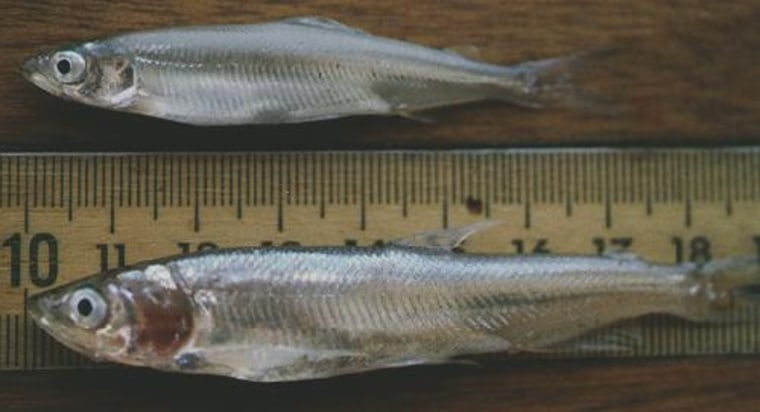The population of the tiny delta smelt has hit an all-time low in the vast estuary east of San Francisco Bay, according to new survey figures made public Wednesday. The results trouble scientists who consider the fish an indicator of the health of the waterway that funnels water to two-thirds of Californians.
The population of a second bellwether species, longfin smelt, also was at a near-record low since measurements began in 1969. Two other harbinger fish species — threadfin shad and young striped bass — had increases in the most recent survey, but still are far below historic levels.
Scientists are concerned about the crash of the four fish species, and frustrated that they have been unable to determine the cause after a year of emergency research. Biologists had hoped to see a rebound in the populations this fall, particularly because water conditions have been good.
Three suspects to be studied
A new round of studies next year will be aimed at narrowing the suspects, with a focus on water pumping to southern California, San Joaquin farmers and San Francisco Bay area cities; invasive species including a prolific clam that is eating the fish's food; and toxic chemicals that may be harming the fishes' health.
Researchers from the state Department of Fish and Game calculate the fish populations based on an index after sampling fish with nets throughout the Sacramento-San Joaquin Delta from September through December, as they have since 1969.
This year's smelt index was just one-third of last year's survey result.
"The delta smelt last year was the lowest we'd ever seen, so this year is definitely the lowest," said Chuck Armor, a California Department of Fish and Game biologist who manages the Interagency Ecological Program made up of six federal and three state agencies that track the delta.
Indices for other species
Longfin smelt also declined sharply from last year, though the index is up from a record low set in 1992.
The indexes for bass and threadfin shad each more than doubled from last year's low count, to the highest levels in the four years since the recent population crash began.
"Historically that (bass) number is way, way down," said Armor. "The same with threadfin — their numbers are up, but it's still way, way down from historic levels."
The bass population hit its all-time recorded low last year, while shad's numbers last year were the lowest since 1985.
